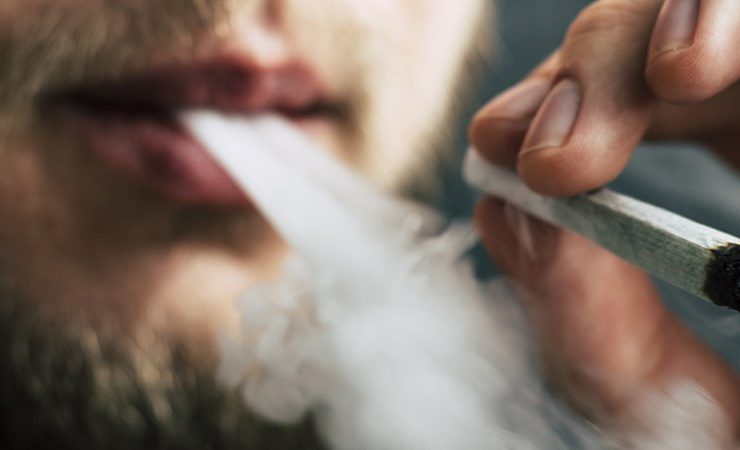Cannabis – Facts, effects, and Warnings
Cannabis is a blanket term covering flowers, stems and seeds from the Cannabis plant. The cannabis plant itself has two sub-groups known as Cannabis Sativa and Cannabis Indica. Both contain the mind-altering chemical known as THC.
Tetrahydrocannabinol is the active agent in Cannabis. It’s responsible for the highness effect of marijuana. THC in cannabis is the reason marijuana is highly addictive.
Not enough warnings exist about the addictive potential of cannabis. In fact, marijuana is the most common addictive substance after alcohol and tobacco. Over 11.8 million adults used cannabis in 2018. And according to the numbers from Monitoring the Future, marijuana use is increasing among students in high and middle school.
Therefore, it’s vital to sensitize yourself about the effects, facts and risks of marijuana usage. Here’s all you need to know about cannabis.
Cannabis’ Effects on the Body
Understanding why cannabis warnings are essential starts with its effects on the body. There are hundreds of compounds present in marijuana. However, only one of them is responsible for the psychoactive effects of using cannabis — THC.
THC exerts its influence by bonding to cannabis receptors present in your body. It binds to receptors in the brain regions responsible for pain and pleasure.
This binding step triggers an avalanche of chemical reactions culminating in increased dopamine production. Dopamine is a feel-good neurotransmitter present in the areas of your brain responsible for pleasure and reward.
Mitch Earleywine, a psychologist at the prestigious University of Albany in New York, had this to say about marijuana’s effects on physical health.
“Scientific conclusions are subjective at best. Folks who like cannabis talk about the relaxation effects and euphoric feeling it brings.
But, cannabis’ effects on the body also depend on the strain. Some strains provide mild stimulation effects while others are noticeably more intense.”
The effects of marijuana depend on the THC content present in it. And according to data from the NIDA, the THC content in cannabis is getting stronger. In the early 90s, the average THC content in marijuana used to be 3.74%. Today, that number is at 10%.
What about Medical Marijuana?
Medical marijuana is useful for soothing anxiety, nausea and epilepsy symptoms. It can also help boost the user’s appetite.
Research is still ongoing to determine whether marijuana can positively impact overall health. For example, a 2016 study involving mice suggests marijuana can improve the user’s memory.
A Closer Look at Marijuana’s Effects on the Body
Above, we explained how marijuana binds to receptors present in the brain. This binding step leads to various reactions depending on the method of administration, prior experience with cannabis and quantity used.
Personal expectations, emotional state and the immediate environment, are other risk factors that can influence cannabis’ effects on your body.
Here’s a closer look at what cannabis does to you:
- Alters your consciousness: You may start to feel super euphoric, relaxed, friendly and happy.
- Altered perception: Cannabis distorts your perception of space and time. You may also start to experience increased sensitivity, including an improved sense of taste, smell, hearing and sight.
- Increased heart rate: This often comes with bloodshot eyes, increased appetite and dilated pupils.
- Impaired concentration: Cannabis affects your body’s ability to move smoothly and concentrate. That’s why most cannabis warnings revolve around avoiding heavy machinery like cars after smoking.
- Negative experiences: Cannabis use comes with many negative experiences like panic, anxiety, and self-consciousness.
The quantity of cannabis you use often determines its effects on your body. People who use too much cannabis are likely to experience disorientation and sedation-like effects. This experience may also come with:
- Panic attacks
- Fluctuating emotions
- Paranoia
- Hallucinations
- Fragmented thought patterns
If you experience any of the above after using cannabis, it may be time to consider marijuana addiction treatment. The symptoms above are signs of severe marijuana abuse. They also indicate a potential for dependence. Therefore, it’s better to get ahead of it by undergoing an addiction treatment program.
How People Use Cannabis
The fact is people use cannabis in many different ways. This information is especially important if you’re looking to help a loved one get rid of marijuana. It’ll help you recognize whether or not your loved one needs cannabis addiction treatment.
Most users smoke marijuana using hand rolled-cigarettes or joints. Other methods include:
- Marijuana cigars or blunts. Users make blunts by slicing open cigars and replacing the tobacco content with weed.
- Inhaling smoke from glass or water pipes. You can also refer to these water pipes as bongs.
- Vaporizer devices containing a marijuana liquid extract. Vapourizer devices pull the active ingredient (THC) and release it for consumption in vapour form.
- Drinking tea infused with marijuana
- Meals with marijuana cooked into them. These food products are also known as cookies, candies or brownies.
Marijuana extracts can come in different forms. But it’s important not to confuse these extracts with synthetic marijuana products.
The streets often refer to synthetic marijuana products as Spice, Herbal Incense or K2. Synthetic drugs comprise laboratory chemicals that the manufacturer designs to look like cannabis. They’re far stronger and more dangerous than cannabis. And unlike marijuana, their overdose can lead to death.
Effects of Marijuana on Your Physical Health
Below are the common adverse effects of cannabis on your overall health:
- Cannabis increases the likelihood of the user developing bronchitis, especially if they smoke it.
- Carcinogens from cannabis smoke can cause lung irritation.
- You can accidentally burn your lips or throat while smoking
- THC can contribute to a weakened immune system
- Increased phlegm production
- Increases heart rate by up to 20-50 beats per minute
- Increased blood flow and heart rate often leads to red eyes
- Cannabis can aggravate existing lung conditions, especially when the user smokes it
- Cannabis can interfere with fetal development if the user is a pregnant woman.
- Can disrupt normal brain development for teenage users
It’s not all doom and gloom with cannabis. Medically, cannabis may provide the following benefits:
- Reduce inflammation
- Reduce pain that comes with specific medical conditions
- Reduces nausea and related symptoms. Patients in chemo are huge beneficiaries of this effect.
Related Article: How Can Marijuana Affect Your Health
Effects of Marijuana on Your Psychological Health
Cannabis’ effects on your health don’t stop at your physical health. Cannabis also comes with consequences for your psychological health.
Here’s how cannabis affects your psychological health:
- Increases your thirst and appetite
- Cannabis may augment depression symptoms depending on the user’s physical characteristics
- Increases or decreases the intensity of anxiety symptoms
- Cannabis impairs your ability to make smart judgement calls
- It can cause issues with your memory
- Cannabis can cause reduced sensations and delayed reactions to external stimuli
- Marijuana can cause hallucinations and feelings of paranoia
Cannabis’ Effects on Younger People
We don’t encourage cannabis use, even for medical purposes. But we do understand that times are changing. Cannabis’ legal nature in Canada means it’s fast becoming a medical recommendation for certain ailments.
Even then, the facts show cannabis is only potentially safe for adult consumption. Teenagers and children are more susceptible to the potential downsides of cannabis use.
Cannabis can disrupt the normal brain development of teenagers and older children. This distortion in natural brain development can lead to a myriad of mental problems like memory loss, poor problem-solving skills and concentration issues. Conclusions from different research pieces suggest cannabis can impair learning ability and memory for users under age 25.
The negative effects of cannabis extend to a fetus. Mothers who use cannabis while pregnant may bear babies who develop concentration and memory issues. The same goes for breastfeeding mothers. Breastfeeding can transfer toxins present in cannabis to the infant. And as you may have guessed, this level of exposure will come with serious physical consequences.
What are the Long-term Effects of Cannabis?
Here’s a fact for you. The long-term effects of cannabis on your body will vary depending on factors like:
- Frequency of use
- Age
- How much cannabis you use per time
These risk factors can contribute to the following:
- Memory loss
- Concentrations issues
- Inability to form new memories
- Lung cancer (we need more research to back this claim)
- Lung irritation
- Cannabinoid hyperemesis syndrome that can cause vomiting and nausea
Are There Any Other Risks to Using Marijuana?
Here’s how cannabis can disrupt your life:
Poor Work and School Performance
Cannabis reduces your ability to focus and concentrate. This negative effect on your attention span can last for weeks or days at a time. Consequently, students who smoke weed are far more likely to fail their exams.
The same goes for a young professional in the workplace. Cannabis can affect your output negatively, leading to workplace queries and a possible sack.
Impaired Driving
Alcohol isn’t the only substance that inhibits your ability to drive safely. Marijuana can affect your alertness, coordination, reaction time and ability to concentrate while on the road.
It’s hard to judge depth or distances while you’re under the influence of cannabis. It also becomes doubly harder to react to other road users’ sounds, signals, and actions.
Reduced Life Satisfaction
The constant cycle of highs and lows means people who use marijuana regularly are less likely to be satisfied with their lives. The drug habit can also cause a rift between family and friends. This rift between loved ones can add to feelings of loneliness, depression and dissatisfaction.
Gateway Drugs
People who use marijuana often go on to use other hard drugs. The science behind this cannabis fact is still in its infancy. But researchers believe it has to do with cannabis’ effects on the brain.
The human brain continues to develop well into the early twenties. Therefore, exposure to marijuana during this timeframe can change the brain to make other hard drugs appear more appealing.
Similarly, young people who abuse cannabis often hang out with people who sell other hard drugs. This exposure increases the temptation to try new hard drugs.
Severe Vomiting and Nausea
Regular long-term marijuana use can lead to cycles of nausea, dehydration and vomiting. This dehydration can get so bad that addicts often require multiple emergency visits to the hospital.
Addiction
Up to 10% of marijuana users develop a use disorder. This disorder defines the point where they keep using marijuana regardless of the negative consequences on their life.
A serious marijuana use disorder can cause problems with your health, relationships, work and family. At this point, you’ll continue to use marijuana even though it gets in the way of your daily life.
People who start using marijuana before 18 are 5-7 times more likely to develop a use disorder condition as an adult. Your family history, social influences and environmental triggers can also increase the risk of addiction.
Marijuana addiction will come with withdrawal symptoms when you don’t use the substance for a few hours. Unfortunately, most marijuana addicts don’t know the signs of drug withdrawal.
The key symptoms of marijuana withdrawal include:
- Sleeplessness
- Lack of appetite
- Drug cravings
- Weight loss
- Anxiety
These marijuana withdrawal symptoms can last for up to a few weeks after you stop using cannabis. Most people return to cannabis because they crave the drug to relieve their withdrawal symptoms.
Related Article: What is the Easiest Way to Quit Smoking Weed?
Final Thoughts
Here, we’ve covered the facts, warnings and effects of using cannabis. From the info above, it’s easy to conclude that consuming marijuana comes with zero benefits.
It’s best to undergo addiction treatment if you have a marijuana use disorder. Here at Inspire Change Wellness Centre, our addiction treatment specialist will devise a treatment plan to help you achieve complete recovery. Get in touch with us today!




